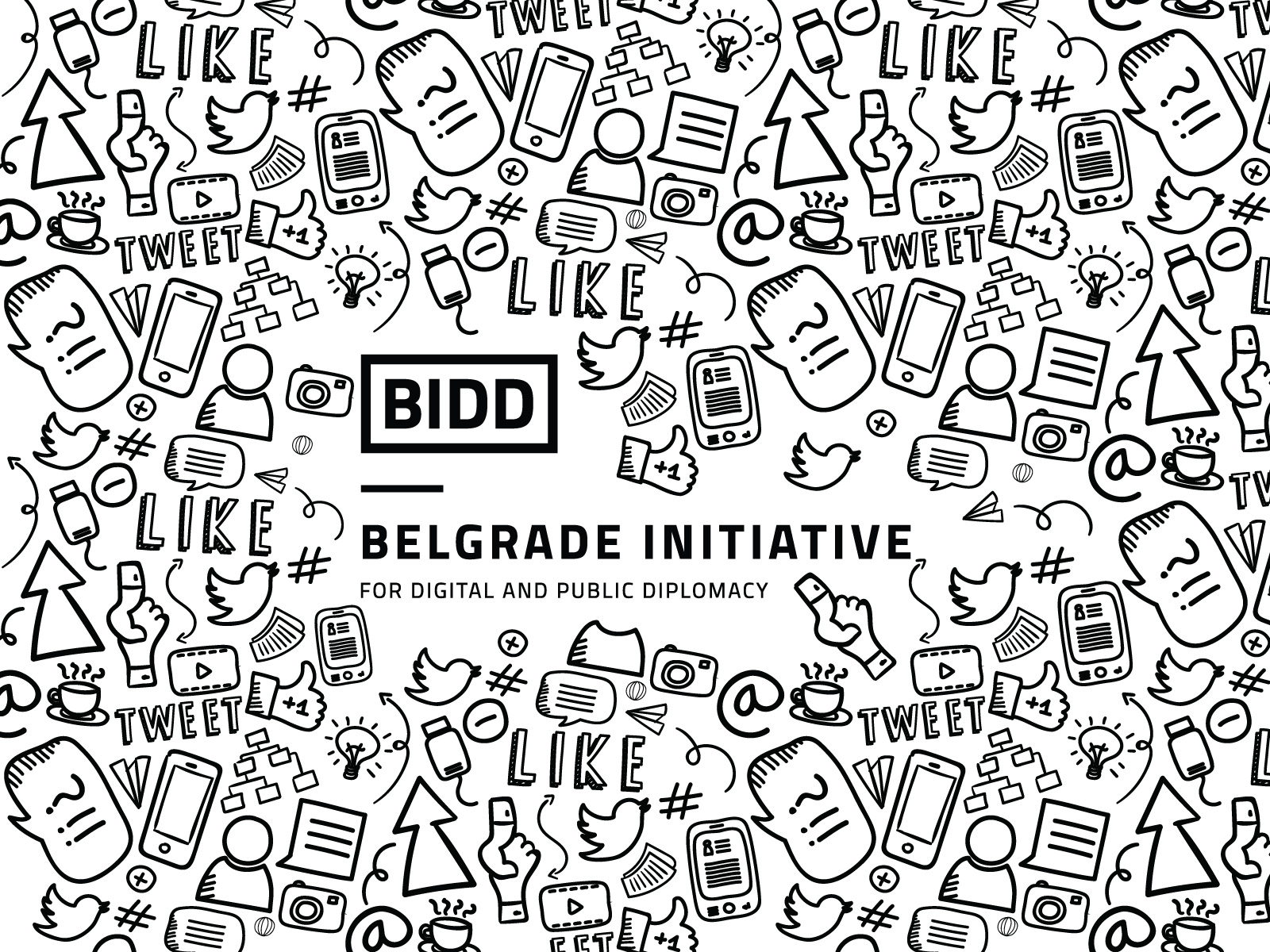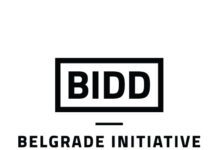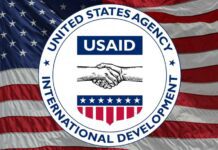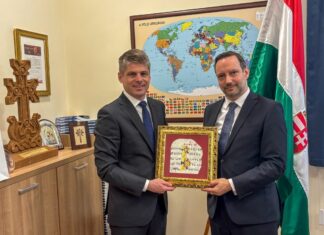iplomacy has traditionally had two distinct faces, public and private, each with its own intended purpose. But those lines have been blurred. Changes in the nature of world politics, due to globalization, new digital communication technologies and democratization (and the rise of populism), have shrunk the distance between countries, and between leaders and their populations, and given rise to “digital diplomacy.”
On the one hand, digital technologies have provided governments with more ways to reach audiences around in the world and opened up space for participation from new voices in policy debates. On the other hand, new information and communications technologies amplify the messages of populist leaders, enable the diffusion of propaganda and misinformation, and can threaten the control exerted by authoritarian regimes — potentially spurring domestic conflict.
Public diplomacy — conducted via choreographed state visits with glamorous events, such as the visit of Prime Minister Justin Trudeau to the Obama White House, or through high-profile cultural exchanges such as tours by the American Ballet Theatre and the Bolshoi Ballet during the Cold War — is intended to project a well-groomed image of a country and build ties. The audience is generally a country’s own citizens and its citizens living abroad, with the goal of changing public perceptions and building a national image.
Private diplomacy, on the other hand, in backroom meetings, quiet informal conversations and third-party negotiations in neutral locations, is used by professionals to draft foreign and global policy and build consensus for international agreements and standards. Meetings at the United Nations or among G7 or G20 countries often provide opportunities for professional diplomats and specialized ministers to have substantive discussions on significant policy matters ahead of the formal agenda. Countries maintain embassies even within unfriendly countries both as listening posts and to maintain channels for quiet conversations, most famously the Swiss embassy’s Foreign Interest Section in Iran.
Digital diplomacy maintains these two functions — public relations and communications — but limits the ability of governments to draw boundaries between sensitive information intended for limited audiences and messages framed for global consumption. Simultaneously, the network effects of social media platforms reduce government control over information while enabling them to reach larger audiences. Diplomacy in the digital era thus inevitably brings risks with its rewards.
Foreign policy via social media platforms
Digital diplomacy is here to stay as Internet accessibility and usage expands worldwide, particularly among young people. A little over a decade after its creation, Twitter attracts 330 million monthly active users. Nearly 80 percent of users are from outside the United States and can choose from more than 40 operating languages. With a few more years under its belt, Facebook attracts 1.4 billion daily active users and over 2.1 billion monthly active users. More than 80 percent of users come from outside the US and Canada.
In fact, the digital divide between developed and developing regions is narrowing. From 2013 to 2015, the median rate of Internet use by adults in developing countries rose from 45 to 54 percent, while smartphone ownership rose from 13 to 37 percent. Once connected to the Web, users from developing areas are more frequent users of social media like Twitter and Facebook than their European and North American counterparts.
Recognizing the ubiquity of this digital technology, governments have been using social media not only for domestic purposes but as an extension of international relations.
Who is posting their foreign policy online, and how does the medium affect the message?
Heads of government and/or state have Twitter accounts, along with their ministerial colleagues in foreign affairs, trade and international development. Each of these ministries typically has a bureaucratic arm that operates its own Twitter accounts. Curiously, Facebook appears to be a slightly less popular choice for digital diplomacy (see table 1) but, when it is in use, activity there closely parallels Twitter activity (see table 2 for the accounts of G20 foreign policy officials with the largest and smallest Facebook audiences).
There are some interesting outliers. While China has banned the use of Twitter and Facebook completely, Iran has strictly limited their use to prominent politicians. The Supreme Leader Ayatollah Khamenei has no fewer than five Twitter accounts in English, Arabic, French, Farsi and Spanish, and one Facebook account. Even President Hassan Rouhani has two Twitter accounts and one on Facebook — which, he divulged to a World Economic Forum crowd in 2014, he does not manage himself. Even former president Mahmoud Ahmadinejad, instrumental in banning social media sites in Iran, joined Twitter this year as @Ahmadinejad1956 and has over 37,000 followers (see table 3 for the most and least active G20 diplomatic Twitter accounts.)
It’s worth noting the trajectory of membership in the Twittersphere (Facebook does not disclose when pages were created). Most official government accounts follow the creation of individual politicians’ personal accounts — at least for developed and emerging powers — with a few exceptions like the US and Norway, which joined as early as 2007. Savvy politicians realized Twitter’s potential for electoral politics and foreign-policy-makers followed suit.
Meanwhile, we see stark differences in the content of digital diplomacy among different countries and social media platforms. Personal accounts, like those belonging to heads of government and state as well as ministers, combine personal and professional elements, including personal commentary with formal announcements. Official accounts, in contrast, are strictly professional, except in rare cases. Prime Minister Narendra Modi’s Twiplomacy at the G20 summit in Hamburg last summer is a case in point. The official account of the Prime Minister’s Office uses a formal style and tone in its tweet, sharing an image of Modi shaking hands with the Prime Minister of Vietnam. In parallel, the personal account tweet contains emojis and a lighthearted exchange between Modi and Prime Minister Trudeau.
Tweet from professional account
Tweet from personal account
The choice of social media platform also affects the content of digital diplomacy. Though its limits were recently expanded, Twitter restricts the character length of posts while Facebook allows elaboration. The effect is exemplified in Trudeau’s G20 posts on the two social media sites. On Facebook, the Canadian Prime Minister used 866 characters to publish his message, while on Twitter he used only 115 characters for the same communication.There are also interesting patterns to countries’ use of social media for sending versus receiving information. While the foreign policy officials’ accounts of India, the US and Turkey have the largest number of followers, those of Mexico, the US and Russia send the most tweets, and those of South Korea, the UK, Australia and Canada are the biggest followers of other accounts. Population size matters, but great powers and top leaders (and regional great powers, like India) seem more inclined to tweet and have the largest followings, while middle powers tend to be listeners.
Twitter encourages concision or, for those seeking to overcome the limit on characters, the proliferation of messages (“threads”). Facebook allows live streaming, a popular feature that provides an increased sense of intimacy, as well as novelty. Not only did Trudeau broadcast multiple live streams during the G20 summit — from the arrival of leaders to bilateral meetings — but each broadcast attracted hundreds of thousands of viewers.
The limits of digital diplomacy
Even in the digital sphere, public diplomacy has its limits. In practice, the flow of information is not as democratic as supposed. Most G20 countries are highly selective of their Twitter entourage (see table 4), and Facebook limits interaction to the largely ignored commentary sections and private messaging.
Turkey’s President Recep Tayyip Erdogan, who once used the Internet to stave off a coup, is a prime example. Boasting among the highest online followings, the budding autocrat follows only his wife and his two other Twitter accounts. Twitter is effectively another broadcast outlet rather than a democratized space. In the broader context of digital communication, digital diplomacy’s reach is restricted by online silos. Chief causes include unequal access to the Internet, the formation of ideological bubbles and — particularly relevant to diplomacy — the regionalization of social media platforms worldwide. The variety of operating languages used in social media platforms adds another source of disconnect in cyberspace.
Message control is also riskier. From nation branding and selfie diplomacy to the careful use of emojis, digital diplomacy adapts to the norms of cyberspace. Practically, state actors interact online through displays of friendship or naming and shaming foreign leaders and their actions. However, they do this at their own peril, because unlike in traditional diplomatic settings, digital communication operates in an environment where power over information flows is more anarchic. What goes viral is out of the hands of politicians and diplomats, making public digital diplomacy risky. Trudeau’s recent trip to India is a case in point, as the supposedly social-media-savvy politician has been roundly criticized both domestically and internationally for his choice of wardrobe, perceived ambivalence regarding Sikh extremism and invitation of a convicted attempted murderer to a formal event hosted by the Canadian High Commissioner in Delhi.
The private face of digital diplomacy also has constraints in a digital era. First, the big data nature of social media output presents analytic challenges from information overload, as policy-makers are confronted with so much information collected online about domestic and foreign publics that making use of it for practical ends requires time and expertise.
Second, threats and innuendoes that would have traditionally been delivered verbally, without a written record, now leave lasting trails, as in the case of President Trump’s tweet in response to North Korea’s nuclear threats.
Finally, digital communication networks increase the risk of and capacity for large releases of private information on government activity. For example, WikiLeaks leaked roughly 720,000 secret diplomatic and military documents in 2011 through Private Chelsea Manning.
Digital diplomacy provides tools for governments to broadcast national brands but creates weak network links. Tweets are unsuitable for an effective response to exogenous shocks or diplomatic crises requiring trust building and the subtle communication of intentions and resolve, such as within trade disputes or nuclear standoffs.
Though the two-dimensional nature of diplomacy endures, digital technology sheds new light on the tension between the public and private spheres of diplomacy. The digital revolution can be heralded as a positive-sum contribution to world affairs, with the reduction of distance and increased potential for understanding, but this must be weighed against the challenges.
The same tools that allow governments to speak directly to citizens around the world and increase space for underrepresented voices in policy debates also provide podiums for the spread of global populism and amplify discontent around the real or imagined impacts of globalization. With the rise of social media, governments no longer control the content of international diplomacy, and private conversations are harder to have. Exchanges of selfies between world leaders may warm the hearts of netizens and quickly travel the World Wide Web, but they make for poor foreign policy.
Photo: Prime Minister Justin Trudeau poses for selfies after a press conference in Manila, Philippines, 14 November 2017. EPA/KENJI HASEGAWA













